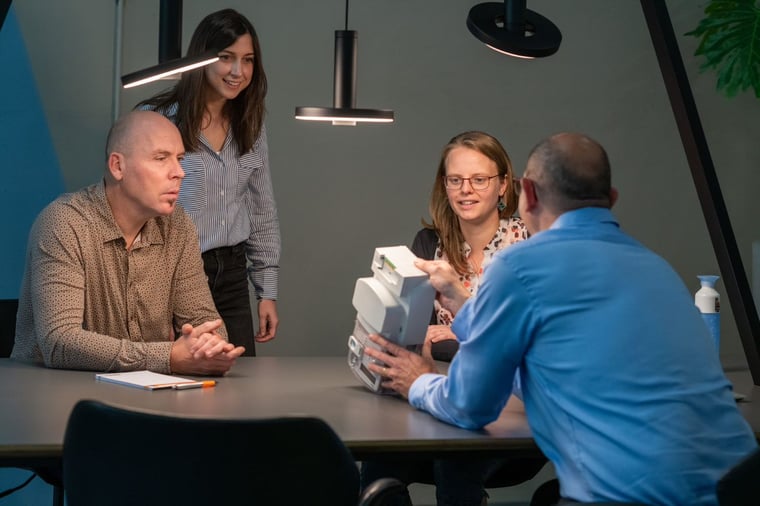As a product developer, you know: a failure in the product or process can have major consequences. Especially when you can't find the cause. With a root cause analysis (RCA) you search for the cause of the problem in your physical product or software in a structured way. Simone Bouwmans – Booij, root cause analysis specialist at Holland Innovative (HI), explains why the RCA method does work.
The RCA method is based on ruling out possibilities, not exploring all possible causes.
The importance of an RCA
Simone: “An RCA is often seen as a 'last resort’. At that time, organizations have been looking for the cause of a problem for a long time. With an RCA they will find it anyway. This is because the cause is often something that people had not thought of themselves and therefore could not find. The RCA method is based on ruling out possibilities, not exploring all possible causes.”
External view
Ideally, an RCA is performed by an external party. Simone: “An RCA specialist is a specialist in the process, not the product. Add to that the external aspect, and you have a specialist with a fresh perspective. Who doesn't know much of the history, asks different questions, and challenges the processes. It is someone who has technical and physical knowledge but is not necessarily specialized in the product.
Of course, it is important that an RCA specialist works together with the engineers or suppliers of the product. There is often an incredible amount of knowledge available in a company. Of course, you want to use this. That is why collaboration is really the key to success.”

Work step by step
While performing a root cause analysis, the RCA specialist approaches the problem in a structured manner and with an open mind. Simone: “I don't make a list of all possible causes. That leads to a lack of focus. With the RCA methodology, I create focus. What do we really want to know? That's what it's about.
To achieve this I roughly follow the following steps. First I map out the differences based on data and I look for contrasts. Why does customer A experience problems and customer B does not? How come the problem didn't exist yesterday but does exist today? Without a contrast, I can't run a proper RCA. Comparative material is therefore a requirement.
The next step is actually comparing the 'good' and 'bad' situations, or the old and the new. What has changed? Is this change in the internal environment, for example, a part of the product? Or the external environment, for example, the installation of the product? I zoom in further on the product or process and conduct experiments. That way we get closer and closer to the cause.”
RCA in practice
Simone continues: “An example: in 2019 an organization received a large number of modules back from the field due to malfunctioning. This had never happened in 2018. The release tests at the suppliers were good and the module performed well on the test bench. The problem arose after the installation. The RCA showed that the supplier had made a design change and that the product was sometimes installed incorrectly in the field. The incorrect installation never caused any problems before, but the new design now caused a short circuit. The solution turned out to be very simple. Since then, a small red sticker on the product prevents incorrect installation by the installer.”
Getting started with a root cause analysis
Also looking for the root cause of your problem? Make an appointment with one of our specialists via cindy.camp@holland-innovative.nl, and discover how together we can uncover the cause of the problem.
Or do you want to learn this structured approach yourself, and thus become a proper 'problem-solver'? Then take a look at the Problem Solving Root Cause Analysis (holland-innovative.nl) or register immediately; we will start with a new group on April 21, 2022.




.jpg?width=200&name=Holland%20Innovative%20summer%20academy%20-%20Project%20Management%20Masterclass%202%20(2).jpg)